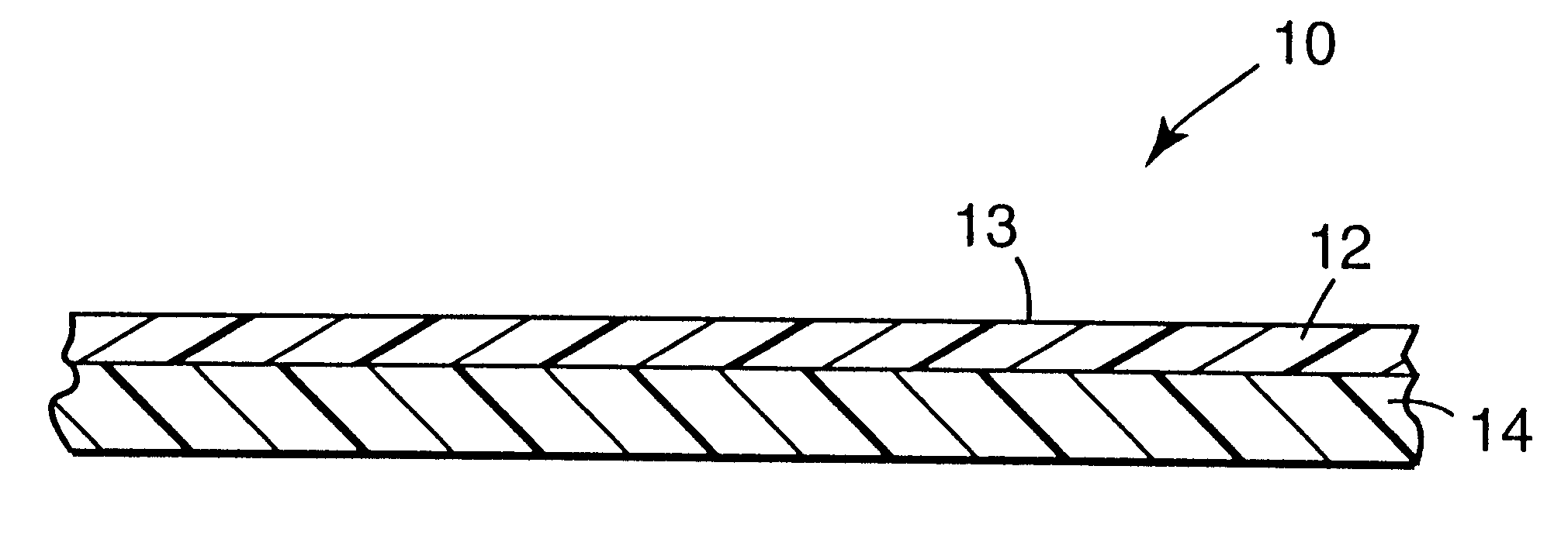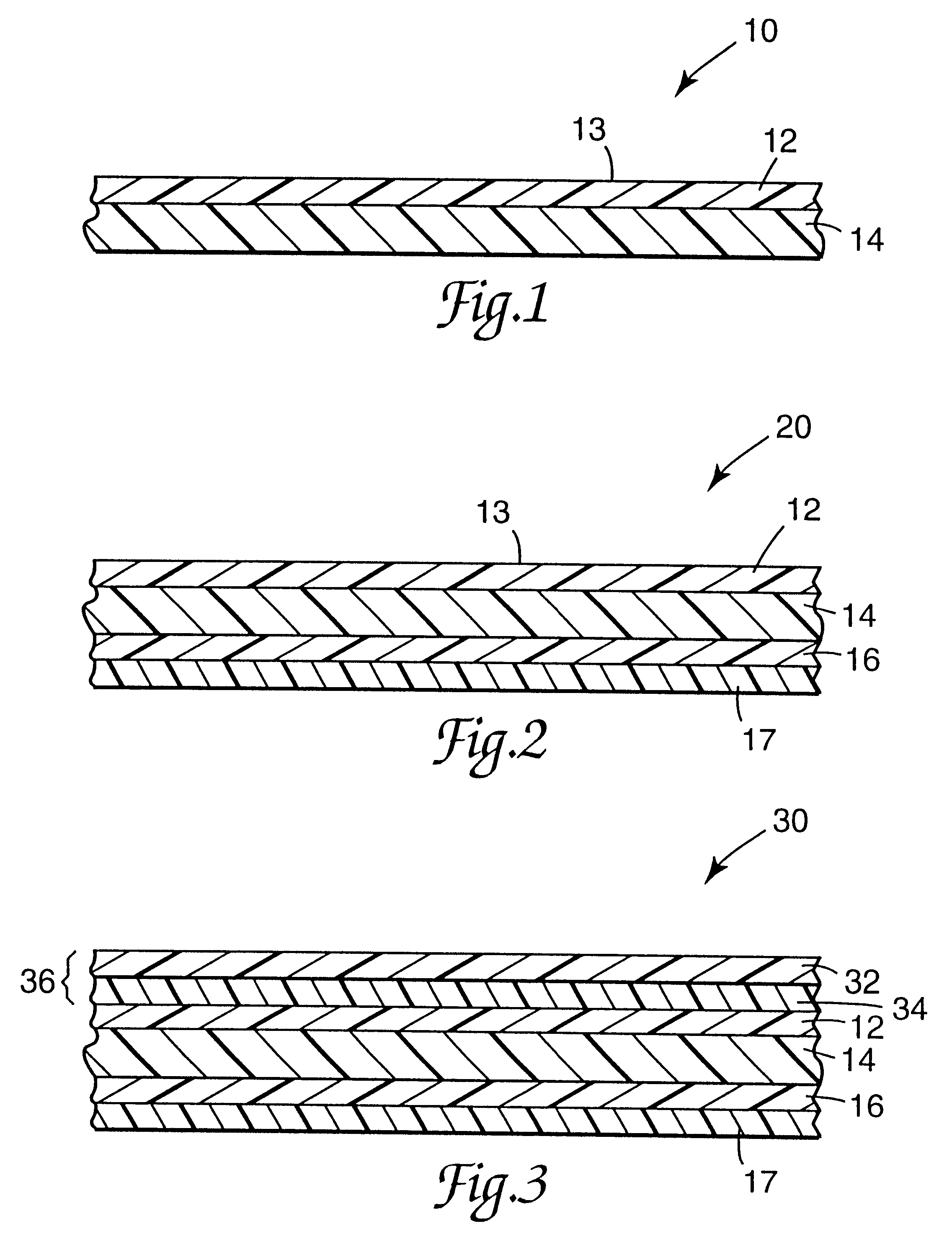Image receptor medium containing ethylene vinyl acetate carbon monoxide terpolymer
a technology of ethylene vinyl acetate and image receptor, which is applied in the field of film, can solve the problems of insufficient durability or weather resistance of paper-based media, easy to tear when removed, and low cost of polyolefin base film, which contains no plasticizer, and does not provide good ink/toner adhesion
- Summary
- Abstract
- Description
- Claims
- Application Information
AI Technical Summary
Benefits of technology
Problems solved by technology
Method used
Image
Examples
examples 1 and 3
and Comparison Examples 2C and 4C-6C show that of the Elvaloy.TM. brands of resin, only the ethylene vinyl acetate carbon monoxide terpolymers provide good ink adhesion, though not all ethylene vinyl acetate carbon monoxide resins do as shown by Example 2C which terpolymer contained undesirable additives that bloomed to the surface of the imaging layer and affected adhesion of ink.
example 9
as compared with Comparison Examples 7C and 8C, show that corona treated Bynel 3101 resin (Example #7C) makes a good ink receptor, the non corona treated material (Example #8C) is a poor receptor, while the blend of 20% Elvaloy.TM. 741 (used in Example #1) to 80% Bynel 3101 (Example #9) results in a formulation with good ink receptivity.
examples 10-12
show a typical receptor layer formulation including pigments, UV and antiblock additives. This formulation has good ink receptivity when produced (Example #10), after heat aging (Example #11) and after exposure to intense UV ink curing conditions (Example #12).
PUM
| Property | Measurement | Unit |
|---|---|---|
| weight percent | aaaaa | aaaaa |
| weight percent | aaaaa | aaaaa |
| thickness | aaaaa | aaaaa |
Abstract
Description
Claims
Application Information
 Login to View More
Login to View More - R&D
- Intellectual Property
- Life Sciences
- Materials
- Tech Scout
- Unparalleled Data Quality
- Higher Quality Content
- 60% Fewer Hallucinations
Browse by: Latest US Patents, China's latest patents, Technical Efficacy Thesaurus, Application Domain, Technology Topic, Popular Technical Reports.
© 2025 PatSnap. All rights reserved.Legal|Privacy policy|Modern Slavery Act Transparency Statement|Sitemap|About US| Contact US: help@patsnap.com


